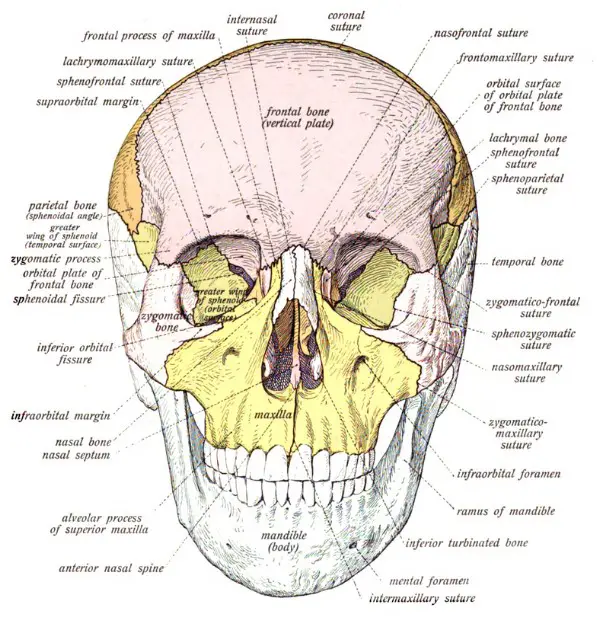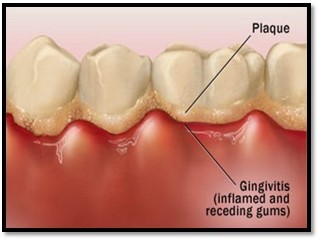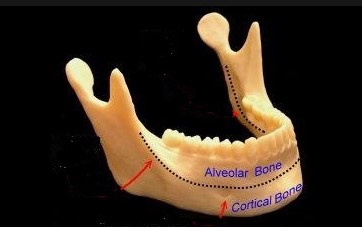The human body is a complex system, supported by a framework of bones that serve various functions beyond just providing structure. In the realm of dentistry, the distinction between different types of bones is crucial, particularly when examining the basal bone and alveolar bone. These bones play pivotal roles in oral health, each contributing uniquely to the dental structure and its functionalities.
The basal bone and alveolar bone are key components of the jaw structure but serve different purposes. The basal bone, forming the body of the jawbones, is primarily responsible for providing support to the facial skeleton and anchorage for teeth indirectly via the alveolar bone. On the other hand, the alveolar bone directly supports and anchors the teeth, making it fundamental for dental health and the success of dental implants.
While both types of bone are essential for dental health, their differences extend to their physical characteristics, biological functions, and response to dental treatments. The basal bone, being more robust and less susceptible to resorption, contrasts with the alveolar bone, which is dynamic and changes with tooth loss or periodontal disease. Understanding these differences is crucial for dental professionals in diagnosing, planning treatments, and managing oral health effectively.

Bone Basics
Bone Types
Bones are the backbone of the human body, both literally and figuratively. They provide structure, protect organs, anchor muscles, and store calcium. Broadly, bones can be classified into four categories: long bones, short bones, flat bones, and irregular bones.
- Long bones are characterized by a length greater than their width, like the femur. They are crucial for large movements and support.
- Short bones are about as long as they are wide, exemplified by the bones of the wrist (carpals). They facilitate stability and some movement.
- Flat bones, such as the ribs, provide protection for internal organs and a broad surface for muscle attachment.
- Irregular bones do not fit into the previous categories and include bones like the vertebrae and certain jawbones, offering specialized protection and structural support.
Overview of the Skeletal System’s Role in Oral Health
The skeletal system plays a pivotal role in oral health, beyond merely housing the teeth. It supports facial structure, aids in the mechanical process of digestion through mastication, and provides a framework for the attachment of facial muscles and ligaments. The jawbones, including both the mandible (lower jaw) and maxilla (upper jaw), are integral components of the skeletal system that directly impact dental health.
Bone Function
General Functions of Bone in the Body
Bones serve multiple essential functions beyond providing a sturdy framework. They protect vital organs, such as the brain, heart, and lungs. Bones also house bone marrow, where blood cells are produced. The storage of minerals like calcium and phosphate is another critical function, as these minerals are vital for bone health and serve as a reservoir to maintain mineral balance in the blood.
Specific Roles of Bones in Dental Health and Facial Structure
In dental health, bones play several key roles:
- They form the support structure for teeth.
- The jawbones determine the shape and size of the oral cavity.
- They affect the alignment and occlusion (bite) of teeth.
- Bones also impact the aesthetic appearance of the face.
A healthy skeletal framework, especially in the jaw area, is essential for optimal dental health, proper mastication, and speech.
Basal Bone Explained
Definition and Characteristics
The basal bone is the part of the jawbone that lies beneath the alveolar bone, the section of the jaw that directly supports the teeth. Unlike the alveolar bone, which is subject to change based on tooth presence and health, the basal bone is more stable and resistant to resorption. It provides the fundamental support needed for the facial skeleton and serves as an anchor for dental prosthetics indirectly.
Physical and Biological Characteristics
Physically, the basal bone is denser and less porous than the alveolar bone. This density contributes to its strength and resistance to changes over time. Biologically, it has a lower metabolic rate, making it less prone to diseases that affect the alveolar bone, such as periodontitis.
Role in Oral Health
Contribution to Overall Oral Structure
The basal bone’s robustness and stability play a crucial role in facial structure integrity and oral function. It supports the lower part of the face and provides a base for the alveolar bone, impacting overall dental alignment and aesthetic appearance.
Impact on Dental Treatments and Implants
For dental treatments, especially implants, the quality and quantity of the basal bone are critical. The basal bone’s stability and resistance to resorption make it an excellent site for implant anchorage, ensuring the long-term success of dental prosthetics.
Alveolar Bone Unveiled
Definition and Properties
The alveolar bone is the part of the jaw that surrounds the roots of the teeth, providing them with support and stability. It is part of the tooth socket, or alveolus, and undergoes continuous remodeling in response to tooth movement or loss. This bone is less dense and more porous than the basal bone, making it more susceptible to changes from external factors like periodontal disease or mechanical stress.
Unique Features Distinguishing it from Basal Bone
Unlike the basal bone, the alveolar bone is directly involved in the support of teeth. Its unique feature is its ability to remodel and adapt, which is crucial for orthodontic treatments and the healing process following tooth extractions. However, this also means it is more vulnerable to bone loss in the absence of teeth or due to periodontal disease.
Importance in Dentistry
The Critical Role of Alveolar Bone in Tooth Support and Health
The alveolar bone’s health is paramount for tooth stability and oral functionality. It directly affects the success of dental implants, as these require a healthy bone for anchorage and osseointegration. The presence and health of the alveolar bone also influence the outcome of orthodontic treatments, as it must be able to adapt to the forces applied to move the teeth.
Implications for Periodontal Disease and Tooth Loss
Periodontal disease can lead to the destruction of the alveolar bone, significantly impacting oral health and leading to tooth loss. The ability to prevent, halt, or manage bone loss is a key component of treating periodontal disease. Understanding the properties and significance of the alveolar bone is crucial in developing effective treatment plans for preserving oral health and preventing tooth loss.

Comparative Analysis
Structural Differences
Comparison of Physical Structure and Location
The basal bone and the alveolar bone differ significantly in both their physical structure and location within the jaw. The basal bone, more robust and compact, forms the body of the jaw and serves as a foundation for the facial skeleton. It is located deeper within the jaw, beneath the alveolar bone, providing stability and support to the overall structure of the jaw.
In contrast, the alveolar bone is less dense and more porous, specifically adapted to surround and support the teeth. It makes up the tooth sockets (alveoli) and is directly involved in tooth anchorage. This bone is subject to continuous remodeling in response to the forces exerted by the teeth, making it more dynamic than the basal bone.
Differences in Density and Composition
The density and composition of these two bones are tailored to their functions. The basal bone’s density makes it less susceptible to resorption and more stable, which is crucial for its role in supporting the face and providing a base for indirect tooth support. Its composition is predominantly cortical bone, known for its rigidity and strength.
The alveolar bone, however, has a higher proportion of trabecular bone, which is lighter and more flexible. This structure allows it to undergo remodeling and adaptation to changes in the dental arch, such as tooth movement or loss. Its lower density compared to the basal bone makes it more prone to changes and diseases affecting the teeth and gums.
Functional Contrast
Divergent Roles in Oral Health and Dental Practices
The basal and alveolar bones play divergent roles in oral health and dental practices due to their different properties and locations. The basal bone provides fundamental support for the facial structure and acts indirectly in tooth anchorage through the support of the alveolar bone. Its stability is crucial for the overall form and function of the jaw.
The alveolar bone, directly supporting the teeth, is vital for tooth retention, alignment, and the success of dental prosthetics like implants. Its ability to remodel is essential for orthodontic treatment effectiveness, allowing teeth to move into their correct positions.
How Each Bone Type Reacts to Dental Diseases and Treatments
The reaction of these bones to dental diseases and treatments further highlights their differences. The alveolar bone is directly affected by periodontal disease and can undergo significant resorption in the absence of teeth or with disease progression. This can impact the success of dental implants and require bone grafting for implant site preparation.
The basal bone, due to its density and location, is less directly affected by periodontal diseases and tooth loss. However, severe cases of periodontitis can eventually lead to changes in the basal bone, affecting facial structure and requiring more complex reconstructive efforts.
Impact on Dental Procedures
Considerations for Dental Implants and Orthodontic Treatments
The type of bone has significant implications for dental procedures such as implants and orthodontic treatments. For dental implants, the health and density of the alveolar bone are paramount. Adequate alveolar bone ensures stability and osseointegration of the implant. In cases where the alveolar bone is insufficient, procedures like bone grafting are necessary to provide adequate bone mass for implant support.
In orthodontic treatments, the remodelable nature of the alveolar bone allows for the effective movement of teeth. The treatments rely on the bone’s ability to adapt to new tooth positions, highlighting the importance of maintaining good bone health for successful orthodontic outcomes.
The Significance of Bone Type in Surgical Outcomes
The type of bone can significantly affect surgical outcomes, especially in complex dental surgeries. The basal bone’s stability and resistance to resorption make it a crucial factor in the long-term success of surgeries that involve the lower facial structure. In contrast, the alveolar bone’s health directly impacts the success of procedures that involve tooth replacement and support.
Clinical Significance
Diagnostic Importance
How Understanding These Bones Aids in Diagnosis
A thorough understanding of the basal and alveolar bones aids significantly in diagnosing various dental conditions. For instance, distinguishing between diseases that affect the alveolar bone versus those that impact the basal bone can guide treatment planning. Radiographic evaluations often reveal differences in bone density and structure, helping clinicians assess the extent of periodontal disease, the feasibility of dental implants, and the need for bone augmentation procedures.
Use in Planning Dental Surgeries and Treatments
Knowledge of the structural and functional differences between these bones is essential in planning dental surgeries and treatments. It influences decisions regarding implant placement, the approach for bone grafting, and the management of orthodontic treatments. For example, understanding bone dynamics helps in predicting treatment outcomes and in customizing interventions to achieve optimal results.
Treatment and Management
Influence on Treatment Options for Various Dental Conditions
The basal and alveolar bones’ characteristics influence treatment options for a wide range of dental conditions. In periodontal therapy, treatments may focus on preventing alveolar bone loss or on regenerating bone where loss has occurred. For dental implants, assessing the quality and quantity of the alveolar bone is crucial to determine the need for pre-implant bone augmentation.
Strategies for Managing Bone Health in Dental Care
Maintaining bone health is fundamental in dental care. Strategies include:
- Regular dental check-ups to monitor bone health and detect early signs of bone loss.
- Proper oral hygiene to prevent diseases that can lead to bone loss.
- Nutritional support to provide the minerals necessary for bone health.
- Smoking cessation, as smoking can adversely affect bone health.
- Treatment of underlying conditions that may affect bone health, such as osteoporosis or diabetes.

Frequently Asked Questions
What is Basal Bone?
Basal bone refers to the part of the jawbone that provides the primary structure and support for the facial skeleton. It lies beneath the alveolar bone and is less affected by dental conditions like periodontitis, making it crucial for long-term dental implant success and overall oral health stability.
How does Alveolar Bone differ from Basal Bone?
The alveolar bone is the portion of the jaw that directly surrounds and supports the teeth, making it essential for dental health. Unlike the basal bone, the alveolar bone is more susceptible to changes from dental diseases, tooth loss, and is critical in the success of dental restorations and orthodontic treatments due to its regenerative capability.
Why is the Alveolar Bone important for dental implants?
The alveolar bone is vital for dental implants because it directly supports these structures, ensuring their stability and longevity. Adequate alveolar bone density and volume are prerequisites for implant placement. Its ability to integrate with implants through osseointegration is key to the success of dental implant therapies.
How can one maintain healthy Alveolar and Basal Bones?
Maintaining healthy alveolar and basal bones involves regular dental check-ups, good oral hygiene practices, and addressing any dental issues promptly. Factors like diet, avoiding smoking, and managing conditions such as diabetes also play a crucial role in preserving bone health and preventing diseases that could compromise bone quality.
Conclusion
Distinguishing between basal and alveolar bone is more than a matter of academic interest; it is a practical necessity in dentistry. Their differences in function, response to disease, and role in dental treatments highlight the importance of a tailored approach to dental care. Recognizing the unique characteristics of each bone type enables dental professionals to make informed decisions regarding diagnostics, treatments, and patient care.
In conclusion, the health of both the basal and alveolar bones is foundational to oral health and the success of various dental procedures. A comprehensive understanding of these bones not only aids in the effective management of dental conditions but also in the advancement of dental science, ensuring patients receive the best possible care and outcomes.

